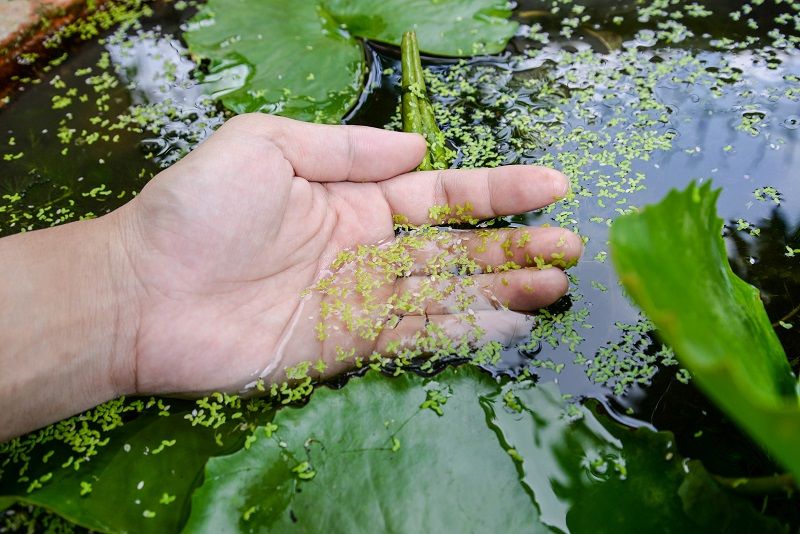There are non chemical and chemical management options.
Chemical duckweed control.
Catch falling leaves in autumn before they reach the pond floor by placing netting or other material on top of the water as a partial.
Non chemical methods non chemical control options start with eliminating obvious sources of nutrients such as lawn fertilizers leaf litter and drainage from feedlots.
Duckweed control includes the removal of leaf buildup on the bottom of the pond.
Control duckweed and persistent floating and submerged pond weeds in your pond all season long in one treatment of airmax fluridone wipeout.
Testing water beforehand and improving conditions alongside manually removing the duckweed is the best method for control and safe fish keeping.
Best control is obtained when discharge can be stopped for 45 days or longer.
For effective duckweed control and removal at a reasonable cost and without environmental damage or risk to water users choose which pond solution.
Depending on the depth of your pond your dosage rates will change.
If you have only a small duck weed problem using a good quality net should be sufficient to clean out most of the weeds.
Control controlling duckweed and watermeal is difficult and challenging.
Duckweed lemna spp is one of the smallest flowering plants but its tiny size can be misleading.
One chemical control used for the treatment of watermeal and duckweed contains the active ingredient fluridone 41 7 percent.
Does duckweed die off in winter.
How to kill duckweed cheaply.
Yes duckweed dies off in the cold weather.
Skimming plants off the.
Failure to follow these instructions will result in wasted time and money.
This chemical is available under the trade name of sonar.
Step 3 use the pond herbicide tsunami dq to get existing duckweed under control.
This gives the best result when you want to use a chemical herbicide to control duckweed.
But there are some species of duckweed that can produce spores.
Duckweed can tolerate a wide range ph between 4 5 and 7 5 as well as temperatures between 68f 20c and 86f 30c making duckweed a challenging aquatic plant management issue worldwide.
This problematic aquatic weed grows in u s.
Follow these specific steps to ensure you are applying the product appropriately.
You will have to use the maximum recommended dosage of tsunami dq which is 2 gallons of product per acre.
By adding an aeration system you can eliminate duckweed completely or limit the growth to the edges which are easily reachable with a hand skimmer.
Duckweed typically prefers stagnant and slow moving water.
Nutrient reduction deprives duckweed of what it must have to grow and spread and decreases the need for chemical duckweed killer.

